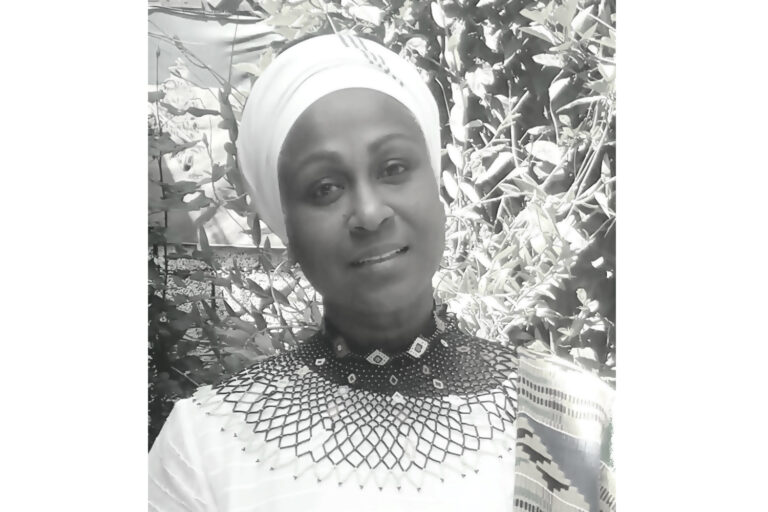Sacred spaces are generally interpreted religiously through architectural structures, some adorned with images reflecting hope, faith and relative canons. Other types of sacred spaces include marvels of Mother Earth such as mountains and rivers; both meant to create spiritual connections. Ethiopia has an abundance of monasteries combining man-made places for prayer and reflection with natural inspiring topography. Genete Mariam Rock Church and Lalibela are amongst sacred spaces nestled in nature. Carvings of myriad meskels adorn the churches while ancient plant and mineral based paintings, recounting significant religious moments, stand the test of time. The landscape is matched only by the soundscape of harmonious chanting priests and winds whistling through ancient trees. In West Africa, the Yoruba of Nigeria, an indigenous ethnic and religious group, is well known for their spiritual culture carried to the Diaspora during the Trans-Atlantic Slave trade. With millions of adherents, Yoruba is upheld by African descendants to date with majority numbers in Cuba and Brazil. Their cosmology connects a Supreme Being with orishas, deities, such as Yemoja the mother of all orishas. Her domain and sacred space is the water, while carefully beautified temples with fresh flowers host Yoruba ceremonies. Countless examples of African and international cultures share relationships of reverence for sacred spaces, aesthetically pleasing and spiritually fulfilling. Hence, society usually protects and preserves them.
The artists called to create such iconic spaces and symbols may never be known, but their aesthetic language left an indelible imprint. Contemporary Ethiopian artists are creating works of harmony and continuity of culture and spirituality, which in the future will tell generations about present day desires, trials, triumphs, prayers, hopes and dreams. In the article “Sacred Space and Contemporary Art” by Grete Refsum and published in ArtWay.eu, Refsum analyzes the Kunsten a vaere kirke, the foundation doctrine of the Norwegian Evangelical Lutheran Church which states,“Both [the arts and the Church] try to create a room for reflection about what it means to be human [ … ] whatever the point of reference… the task is to seek places for meeting in which we can collaborate in tracing the sketches to a meaning that has to be reconstructed again and again.”
While this theory appears to recognize the arts in relation to the church, what about spaces for art such as galleries and artists’ studios? May these too be sacred spaces? After all, these venues present art which evoke extraordinary experiences and emotions…introspection, examination, reflection, reconciliation. For the record some exhibitions are quite provocative and challenging, however it’s the space that comes into question, as there are unlimited and diverse artists. One place that held a level of reverence for the arts community was Nas Studio and Guarmayle Art Center in Piassa. It was a place where many came to connect, revere, reflect and find comfort in shared moments of enjoyment and enlightenment. After many efforts to transform and keep the space, in accordance with the city’s river plan, the world watched this week as the Center’s owner Mifta Zelleke and internationally renowned resident artists, Tamrat Gezaghen, Dawit Adinew and Leikun Nahusenay amongst others, scrambled to remove their art. Created on canvas, wood, stone and other materials found by the river running under the Ras Mekonnen bridge, social media shared the demolition of the 22 year-old art space. Thousands of viewers and comments expressing pain and sadness could not halt the process. We bid them farewell, at that location.
The Nyahbinghi Tabernacle, an iconic Rastafari sacred space, designed after the circular Ethiopian Orthodox Church, was built in Shashamene and inaugurated in 1992, one year after the Derg fell. The Majesty’s Centenary celebration, July 92,’ attracted hundreds to Shashamene while thousands have visited over the years. The Tabernacle was built through international efforts of Rastafari worldwide, Pan Africans and supporters. It was large enough to host hundreds with a compound decorated by images of His and Her Majesties, African leaders, Holy Bible verses and excerpts of The Majesty’s speeches. The tabernacle Headquarters is museum-like, depicting the history and goals of the Rastafari Movement, attracting tourists, journalists, researchers and more. Sadly, a major part of the tabernacle was demolished on May 28 due to an unsettled issue with local authorities regarding the master plan and Nyahbinghi House border. Real estate development and infrastructure are crucial for Ethiopia’s future and we can find ways to respect sacred spaces be they religious, natural and/or artistic. Social cohesion can be achieved through the recognition and usage of art and faith-based spaces are important tools for development, peace and security. “The ancient paintings that are still to be seen in the great monasteries and churches of Ethiopia…carvings…which have come down to us in the ruins of the ancient palaces bear witness to the fact that the fine arts had attained a comparatively high degree of development even in early times. […] Our admiration for the creator’s handiwork should not be limited to those things he has provided us with for our daily needs, but should include all that is good and beautiful. It is these tender feelings of deep and silent admiration evoked from our hearts by the beauties of creation that should find adequate expression in the fine arts.” HIM Emperor Haile Selassie I.
Dr. Desta Meghoo is a Jamaican born
Creative Consultant, Curator and cultural promoter based in Ethiopia since 2005. She also serves as Liaison to the AU for the Ghana based, Diaspora African Forum



